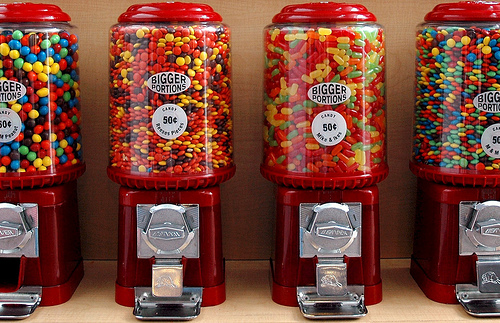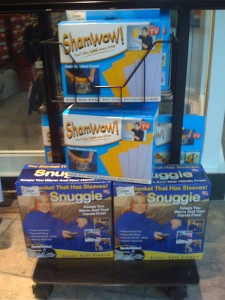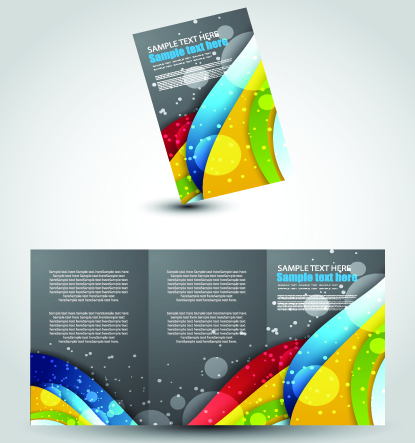Short vs. Long Copy Ads: When to Use Each?
When it comes to business writing, the length of your ads can either help or hinder your ability to connect with your audience. Write copy that is too short, and your customer might not have enough information to make a purchasing decision. If your writing is too long, you run the risk of losing your audience’s interest.
The tricky thing about copywriting length is that both short and long copy are valuable in attracting customers; different situations call for different lengths. In some cases, your length will be chosen for you by the medium you use–for example, a business card has a limited amount of space. However, in most cases, you’ll be the one who has to decide whether to use short versus long writing to get your audience’s attention.
When to Use Short Copy?

When a product is inexpensive, such as vending machine candy, it requires less copy to make a sale.
Photo Credit: Loving Earth
-
Inexpensive Products
If the item you’re selling is inexpensive, you’ll have an easier time trying to sell it to people without a lot of copy. This is because there isn’t a great deal of commitment involved with purchasing an inexpensive item. Think about those candy and toy vending machines at the grocery store–you never see advertisements for these products on TV or in magazines because they have an extremely low cost. Instead, only a picture and some short copy on the machine itself is needed to get you to make the purchase.
Flyers, postcards, and other print media geared towards a shorter length are generally well-suited for more inexpensive items.
-
Familiar Products
The more familiar an item, the less writing is necessary to attract customers. This is because you don’t need to spend much time explaining what the item is; you can instead focus on why the customer needs it. For example, if you sold chocolate ice cream, you wouldn’t need to explain to your audience how ice cream is made or what it tastes like. You would just need to impart the idea that your chocolate ice cream is better than the rest; this could be done with just a small amount of copy on a flyer. On the other hand, if you sold chocolate gelato, you might need to explain to your audience what gelato is, how it’s made and the fact that it tastes like ice cream in order to get an unfamiliar customer to try some.
-
Items in High Demand
A popular or trendy item needs less copy to make a sale because the item is already in demand. Think back to the early ads for iPods, which featured silhouetted dancers and very little information on the product itself. At the time, the iPod was a “must-have” item, so little advertising copy was required to sell them. If your item has a built-in “want” factor, you’ll have a much easier time convincing customers to follow their gut instinct and make the purchase without the need for a lot of information. With these types of products, a postcard with nothing but an image and a call to action will often suffice.
-
When the Audience Demands Short Copy
Sometimes you need to use short copy in order to attract a certain audience. For example, if you were creating ads for children, you would use language that was simpler, quicker and less formal than if you were selling a product to their parents.
Sometimes, situational factors affect the audience’s demand for a smaller amount of words. For example, customers at a restaurant feel pressured to order quickly, so restaurants feature their special items on easy-to-read table tents with short copy and big, detailed pictures.
When to Use Long Copy?

When your product is unique or unusual, it requires a greater amount of copy to familiarize the customer, like these items which are advertised with long infomercials.
Photo Credit: Chris Devers
-
Unusual Products
If you’re selling something that’s a little out of the ordinary, you’ll need more writing to convince people to take a chance and make the purchase. Consider the infomercials you see on TV–these items are usually unique products that you can’t purchase in stores and therefore require a longer commercial or an extensive brochure with much more information to make a sale. The more copy you use, the more familiar your product becomes, which makes it easier for a customer to make a commitment.
-
Specialty Products
Specialty items have a similar hurdle to clear since they are intended for a specific target audience. For example, if you sold dental equipment, you would reach out to your target audience with brochures and pamphlets on the benefits and features of your product instead of using short copy on postcards or sell sheets. Specialty items like these require a larger undertaking on the customer’s behalf. Therefore, they will want to have more information before they make their decision.
-
Items with Several Special Features
The more special features an item has, the more reasons your audience has to make a purchase. It’s a good idea to use more copy in these cases so that potential customers have all the information they need to make an informed decision. For example, car commercials and print ads are usually very extensive because there are several special features to showcase that might make a customer pick that particular car over others.
-
Expensive Products
Expensive items require a large amount of commitment, so a large amount of copy is required to convince your audience to make the purchase. This is why you’re often given brochures and info packets to take with you when you go look at a new car or home– even if you’re just browsing. The length of the brochure will help get you over the hurdle of the high cost by explaining in further detail the benefits the product can bring.
Using Short and Long Copy Together
Choosing the right writing length for your ads is not an exact science. There may be situations where using both long and short writing in tandem is the best choice.
For example, a brochure for a spa that offers a wide range of services would have both large and small amounts of writing in different sections. Short copy would be appropriate for things like manicures, pedicures and massages because these are typical spa services and customers know what to expect. However, services like acupuncture, shiatsu massage and Brazilian waxing would require a larger amount of writing because these are more unusual.
Conclusion
Copywriting is all about being able to adapt to new situations. It doesn’t matter if you’re the best writer of short copy in all the land–you’re going to be forced to usee longer copy at some point, and vice versa. Focus on making your writing the best it can be (no matter what the length) and you’ll always be prepared to write for any situation, product or customer.
Posted in Copywriting
Don`t neglect your friends, share this right away.





Leave a Reply